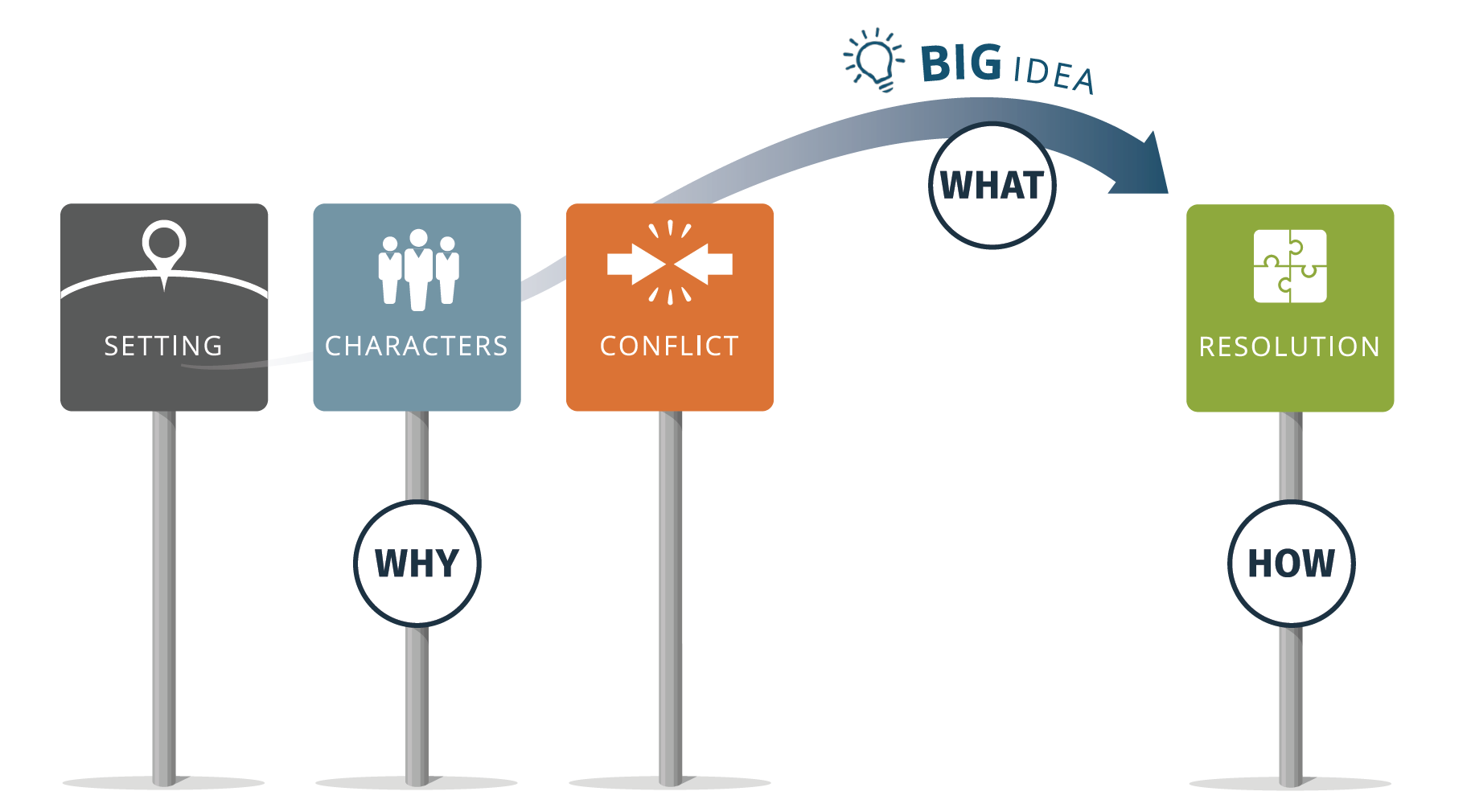When planning any high-stakes communication, knowing who your audience is absolutely essential. But what happens when you are pitching to a variety of people with widely differing interests? In other words, what happens if the “audience” for your pitch is actually “audiences” that can’t be motivated (or even kept awake) by the same story?
For example, suppose you’re proposing a seismic new product strategy to the C-suite at your company. The CTO wants just the technical details. The HR rep sees the new strategy only in terms of what new talent they’ll need to reel in. The CFO may only wake up when you roll out the financials. We all face something like this scenario when we try to convey a new idea. So, how can you fold in multiple characters, and a variety of contexts, to keep everyone off their cell phones and leaning in to hear your message?
The short answer is that you have to grow your story and be nimble.
Your Baseline Story Structure – The Why? The What? and The How…
Every story consists of four ‘signposts’: setting, characters, conflict, and resolution. The first three signposts establish the why of your story. This is the context that’ll give your audience a reason to care about what you propose, conclude, recommend, etc. In other words, this is how you convince your audience why they should remain in their seat through the conclusion of the meeting.
Then there’s the what of your story. Also known as your BIG Idea, this is the one thing you want your audience to remember as compellingly as possible.
The how of your presentation is your story’s resolution. For project managers, this might be the details on timing and resources for a new product strategy. For salespeople, it’s the big reveal of the new product and all it’s tempting features. For CEOs, it may be revenue forecasts presented to the Board. Your resolution is how your BIG Idea will come to life.
Once you have a good story structure firmly in place, here are three simple-yet-powerful tips to try in your next big face-to-face from Janine Kurnoff, Founder of The Presentation Company:
Tip 1: Introduce Multiple Characters
“Characters in your story will help your audience relate more deeply to your content. So, when you are faced with a room — or virtual space — of people with a variety of needs and knowledge levels, introduce multiple characters,” Kurnoff suggests. “Each character should face their own unique conflict. It’s important not to go into too much detail. Don’t cloud the main ideas, and don’t over present. And always make sure to circle back to your BIG Idea: it’s the one thing you want your audience to remember after they leave.”
TIP 2: Include A Resolution Landing Page as “Homebase”
For the how of your story, Kurnoff suggests you consider a resolution landing page that shows exactly how you are prepared to resolve each of the conflicts facing the characters you’ve introduced.

“This visual map drills down for more detail on each conflict, arranged as subtopics. This allows you the storyteller to respond to your audience in the moment by easily navigating to the requested areas of interest. When your audience has a visual cue of what you are discussing, it invites conversation, lets you dig in, and helps address their specific needs. It is also easy from this position to click back to your home base, and drill down into another area,” she says.
TIP 3: Get Your Audience Involved
Kurnoff’s final tip for handling a diverse audience: Get them involved in the conversation early and often. “We know that the hallmark of a great communicator is someone who understands their audiences’ varying needs, and prepares diligently. But it’s also crucial to continually address audience needs by gauging their interest in the moment. A strategic way to do this is building into your presentation an opportunity for two-way dialogue.”
Below is her example of a “check-in” right at the outset of your presentation:
“Ms. Busy CEO: I know we only have a few minutes today. So, let me ask you…
- Would you like to know WHY I’m recommending the new XYZ Initiative?
- Or, would you like me to show the details of HOW we think the initiative will benefit the company?”
“Senior leaders, who are often short on time, love to ask questions. They love to be in the driver’s seat — so put their hands on the wheel! By creating a two-way dialogue, you can zig and zag through your content, only showing relevant information that meets their specific in-the-moment needs,” she concludes.
Good Presenters Strive to Connect with Everyone
Can you really give the same amount of attention to everyone in your audience? Probably not. But a group of VIPs will be much more open — and awake! — during a narrative that speaks to them directly and asks them for feedback along the way.
Today, professional storytelling experts can help you hone your messaging. You can also take a corporate training from a company like The Presentation Company or Lynda.com, to learn how to anticipate the needs of your whole audience and invite frequent engaging interactions. The primary message of trainings like these is simple: when you understand and respond to what your audience cares about, they are much more likely to care about you!
Republished with permission from Forbes.com.


